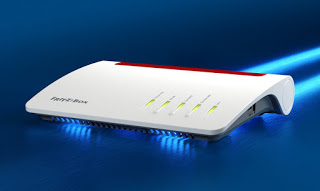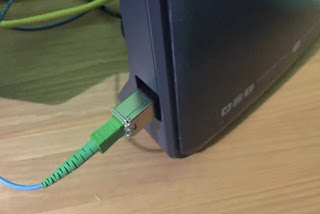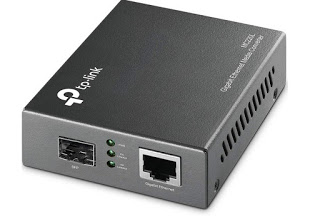Do you want to change the router to get the best fiber speed? Discover the best of the moment

In this article, we will show you what is the best router for fiber, how to connect it to our home network and what problems we can expect from the process, given that telephony operators in Italy hardly release all the parameters to be able to personally configure their modem/router.
Best fiber router
Based on the fiber connection technology we use, we can configure the new fiber router in a variety of ways, so that we can improve the quality of the connection even without having the skills of a computer technician (we will also show you the quick and fast procedure to navigate with the new fiber router, available to every user).
Differences between fiber optic connections
When we talk about fiber optic connections, we are actually talking about two distinct technologies:
- FTTC (also known as VDSL, FTTS is FTTN): this technology makes it possible to obtain the fiber optic connection to the cabin closer to our house, and then continue to our home with the simple copper cable. Currently, it is one of the most widespread connections in Italy, since it is cheap to configure and does not require interventions on telephone sockets. By law, operators must sell it with acronym FR (ie “copper mixed fiber”).
- FTTH: the best technology for fiber optic connection, to the point that it is recognized as “true optical fiber”, legally sold with initials F (“Optic fiber”). With it, the fiber cable will reach the house in place of the telephone socket and will allow us to reach very high transmission speeds (always above 100 Mega per second).
The connection of the modem/router is slightly different between the two technologies: with the FTTC the connection happens exactly as on the modems for the ADSL, that is connecting a copper pair to the telephone socket of the house; with FTTH technology the twisted pair no longer exists, replaced by a fiber optic cable that enters directly into the router or from a wall distribution box, which converts the signal to Ethernet (the modem/router will, therefore, be connected via Ethernet) .
If we have an FTTC connection we can use both the simple procedure and the advanced procedure; if instead, we have an FTTH connection, we can usually only follow the simple procedure, since the nature of the connection is decidedly more complex (not within the reach of normal Internet users).
Isn’t the difference between FTTC and FTTH completely clear? We suggest you read our analysis VDSL, FTTC and FTTH fiber: which differences and which is better?
Connect a new fiber router (simple procedure)
This procedure is the simplest and we can apply it with any router and with any fiber connection since we will make a simple one cascade between the two devices at our disposal.
Without giving up the modem provided by the operator (which for convenience we will call from now on proprietary modem), we connect the new router to it using a simple Ethernet cable, taking care to connect the cable to one of the doors LAN of the modem owner and at the door Internet or WAN of our new router.
On modern routers we won’t have to do anything else since the network configuration is completely automatic; for convenience, we advise you to enter the control panel of the proprietary modem and disable Wi-Fi, since the wireless network of the new router is much more efficient than that managed by the proprietary modems. Following this procedure, we will not give up the proprietary modem (which we can still use for VoIP telephony) and we will be able to connect all our devices (via cable or via Wi-Fi) solely to the new router, thus taking advantage of its features.
To learn more about cascade-connected routers, we refer you to reading our article on how to connect a new router to the modem without changing networks.
Connect a new fiber modem (advanced procedure)
If instead we want to follow a more complex procedure to connect the two network devices, let’s get the configuration panel of the proprietary modem, we disable the Wi-Fi (useless, since it will be provided by the new router), we delete any configurations of port mapping and we enter the IP address of the new router in the DMZ of the proprietary modem, so as to guarantee total access to the router without any type of filtering or routing (functions that will be used on the new router).
To get the IP address of the new router, we can connect to its Wi-Fi network and discover the address from the control interface, or we can simply access the network configurations of the proprietary modem and immediately discover the IP of the newly connected router (will appear among the connected devices). Once this configuration is done, from now on we will only have to access the configuration panel of the new router to perform port mapping or other advanced configurations since the proprietary modem is in fact “transparent” (ie it acts as a pure modem without applying filters or IP routing).
To read more about this, we refer you to reading our guides How to find the IP address of the home router is DHCP Guide: Assign IP manually or leave IP automatically?
How to use a single router with fiber
And if we wanted to use only one modem/router for the connection, avoiding to create the cascade as seen in the previous chapters? In this case, we will have to check the nature of our connection and see if are present connection parameters at the site of our network operator.
The FTTC or FTTH connection parameters of the main Italian operators can be retrieved from one of the following sites:
- TIM
- Fastweb
- Vodafone
- Wind 3
- Tiscali
For connecting a new router on FTTC connection simply insert the RJ11 cable (the one that is completely similar to the telephone cable) in the classic telephone socket and in the DSL port of the router and configure the parameters, so that you can surf the Internet and talk on the landline phone in VoIP.
If instead, we want to connect a new router on FTTH connection, in most cases (for example on FTTH by Fastweb) it will be sufficient to use an ONT converter, so that you can navigate immediately without problems, abandoning the modem owner.
One of the best devices for the purpose is the TP-Link MC220L Media Converter (€ 23).
The fiber optic cable must be inserted into the socket SFP, while on the door Gigabit Ethernet we will have to connect our new router, configuring the connection parameters as indicated above (we suggest you also make a jump in the Amazon product reviews, where many users have shared the complete configuration procedure).
To get the best transmission quality with this device, we recommend using an Ethernet network cable as good as AmazonBasics – Cat-7e RJ45 Ethernet network cable (€ 7).
Guide to buying the best fiber router
After having closely seen how to connect any router to the high-speed connections in Italy, we will show you in this chapter the best routers we can buy for fiber. For completeness of the information, we will show you both simple routers (for FTTC and FTTH) and VDSL modems/routers (compatible on FTTC networks).
The best Gigabit Ethernet routers we can buy at the moment (excellent for routers or FTTH) are:
- D-Link DIR-809 (€ 29)
- TP-Link Archer C6 (€ 39)
- Netgear R6220 (€ 49)
- AVM FRITZ! Box 4040 (€ 69)
- Asus RT-AC68U (€ 110)
If we are looking for modems/routers compatible with Italian FTTC lines, the best models are:
- D-Link DSL-3785 (€ 59)
- TP-Link Archer VR600 (€ 103)
- TP-Link Archer VR1210v (€ 114)
- AVM FRITZ! Box 7530 (115 €)
- Netgear D7000-100PES (€ 129)
To evaluate other routers or modems, we advise you to read our article on Best WiFi Routers to connect wireless devices at home.
Conclusions
As we have seen, even when we have a fiber-optic connection we have great freedom of choice in terms of routers: we can create a cascade with the router provided by the operator (simpler method and within everyone’s reach) or we can retrieve the parameters of connection and connect our personal router, configuring it according to our needs.
If after following the steps described in the guide we cannot navigate, before contacting the assistance we advise you to read our guides Modem red LED (Internet absent): what to do before calling for assistance is How to tell if the modem router is broken.



